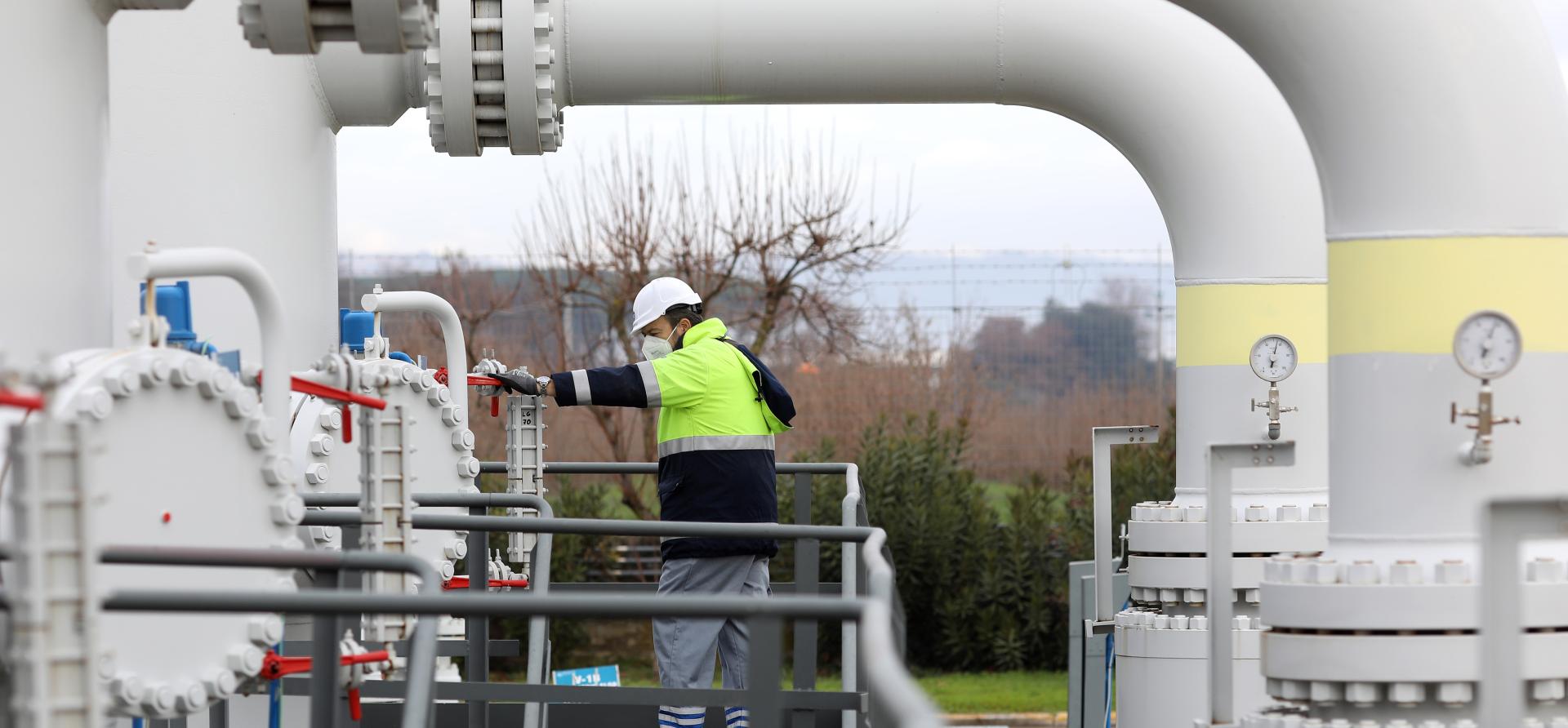Italy’s excessive gas-fired power reliance slows renewables buildout

Key Findings
Italy’s absence of a plan to phase out gas generation does not pave the way for similar levels of renewable growth to its European neighbours.
While other major European electricity producers have shown a clear trend of scaling up renewables and reducing gas-fired power generation, Italy’s 2023 electricity mix had a confusing pattern, with no power source clearly dominating.
Some of Italy’s gas plants receive a state subsidy that keeps them artificially profitable and distorts their exit from the market based on pure fundamentals.
By using gas as the central pillar of its energy strategy, Italy is setting an example to other gas-dependent countries such as Malta, Ireland, the Netherlands and Greece.
Italy is the European Union’s (EU) largest producer of gas-fired power generation—accounting for about the same production as Germany and Spain combined—and its fourth-largest electricity producer. The country’s share of gas usage in the power generation mix is about 50%, almost three times the EU average.
Italy is the EU’s fifth-largest renewable energy generator, with less than half of Germany’s renewable production.
An excessive reliance on gas generation means the country’s solar and wind growth is slower than its potential.
Italy’s gas dependence is partly due to its existing infrastructure and operational characteristics. But this should not justify the fuel’s extensive use in power generation at the expense of growing renewables. Such a strategy may set the wrong example for other gas-dependent countries.
The absence of a plan to phase out gas generation does not pave the way for similar levels of renewable growth to its major European neighbours. The Italian government has openly stated that its gas-supportive policy is one of the main reasons why the country is lagging in terms of exiting fossil fuels.
The government has some ambitious goals to develop wind and solar capacities. However, according to its integrated national energy and climate plan (PNIEC), the announced targets may be hard to reach, based on historical renewables development. The PNIEC forecasts that Italy’s installed solar PV and wind capacity should reach 45 gigawatts (GW) and 17.3GW, respectively, by 2025. That means that between 2023 and 2025, solar and wind capacity combined should grow by 45%, a number not in line with recent years’ track records.
Italy’s confusing electricity production pattern
While the EU’s three largest electricity producers—France, Germany and Spain—have shown a clear trend of increasing renewables and reducing gas-fired power generation, Italy’s 2023 electricity mix had a confusing pattern, with no power source clearly dominating.
According to Eurostat, renewables provided 41% of the EU’s electricity generation in 2023, increasing from 35% in 2022. Wind accounted for 18.5% of all the electricity generated in the EU last year, followed by hydro (13.5%), solar (9.1%) and geothermal (0.2%).
Countries that have a lower share of renewables in their electricity mixes than the EU average include Slovenia, Finland, Italy, Belgium, Estonia, France, Poland, Hungary, Bulgaria, Cyprus, Slovakia, Malta and Czechia.
Renewables meet more electricity demand
At COP28 last year, United Nations Secretary-General António Guterres said limiting global heating to 1.5°C, one of the keystone targets set in the landmark 2015 Paris Agreement, “will be impossible without the phase out of all fossil fuels”, and this is being recognised by a growing and diverse coalition of countries. COP28 negotiators agreed on a commitment to triple renewable capacity by 2030.
Italy plans to have a 30% share of energy from renewable sources by 2030 to achieve that target. Renewables met 38.6% of Italy’s net electricity demand in 2023, rising from 30.1% in 2022, according to Eurostat. While this is a significant increase, the data shows there’s still room for improvement.
Hydro generation increased by more than other renewable technologies in 2022 and 2023 (due to hydrology rather than capacity increases), during which time there were significant variations in gas-fired power production.
EU’s largest producer of gas-fired power generation
Italy becoming the EU’s largest gas-fired power producer has been driven by factors related to resource availability and gas infrastructure in the country, as well as government guidelines that have encouraged the utilisation of such plants.
The country’s natural gas infrastructure, including pipelines and storage facilities, is robust, allowing imports of gas and LNG.
The government has set some guidelines and directions that could be challenged since they legitimate gas as a transition fuel at the European level. A scheme designed by the regulator since 2004 allows some Italian gas plants, both combined-cycle power plants and open-cycle turbines, to receive a capacity payment. This is a state subsidy that maintains them artificially profitable and distorts their exit from the market based on pure fundamentals.
Prime Minister Giorgia Meloni aims to make Italy the EU’s main gas entry point, taking advantage of the energy crisis and reduced imports from Russia.
Has Italy lost its drive for renewables?
Italy’s energy capacity buildout shows a similarly confusing pattern as its power generation in 2023. Renewable capacity increased by 25% between 2021 and 2023; LNG capacity grew by 40% and is expected to continue rising.
Gas can certainly provide flexible power generation, able to ramp up quickly when renewables output is low. However, there are CO2-free technologies that could play a similar role but are not sufficiently promoted in Italy:
- Pumped storage hydropower plants are Europe’s largest source of energy storage. This technology is often discarded due to high capital investment costs and long construction times, but the plants constitute the largest and most reliable response to intermittency.
- Utility-scale batteries are expanding in Europe, and their cost is declining, making them a substantial source of power reserve in EU markets.
- Demand-side response schemes at the wholesale and retail level are spreading fast in EU countries. Excessive reliance on gas will deter the development of such mechanisms.
The most worrying reason why gas-fired power generation doesn’t decline in Italy is the government’s ambition to make the country a gas hub and use the energy source as a transition fuel to reach net-zero emissions. If gas is indeed needed to transition from a thermal to a renewable world, it should be used as a backup only, not for baseload generation. By using gas as the central pillar of its energy strategy, Italy is not only slowing renewable growth but also serving as an example to other gas-dependent countries such as Malta, Ireland, the Netherlands and Greece that this model can be followed.
















